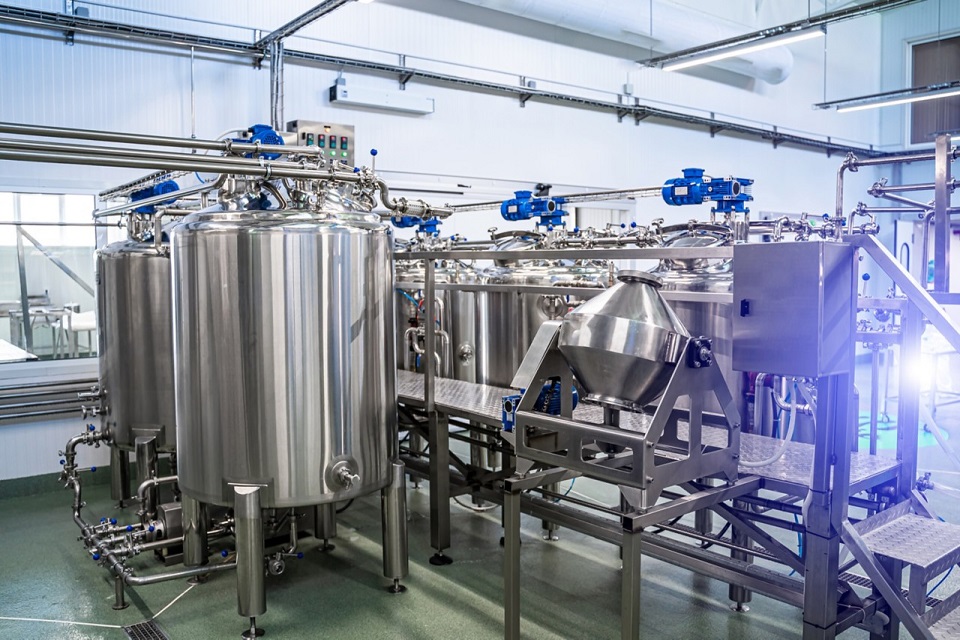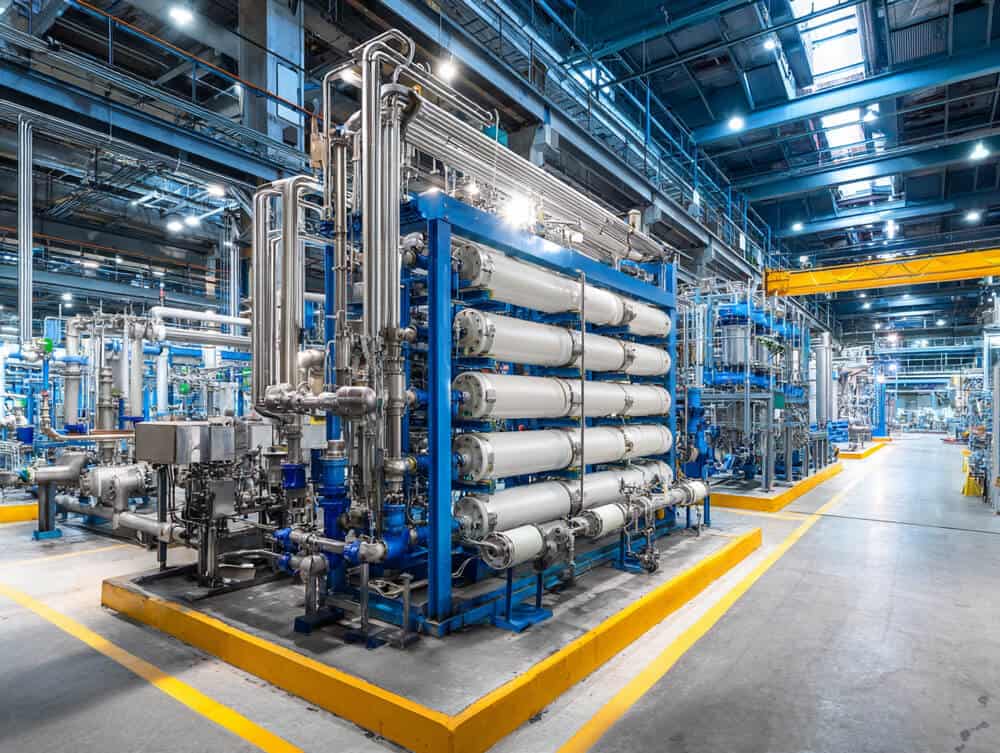
Industrial Filtration Technologies: Driving Compliance, Innovation & Sustainability in $36B Market
Advanced filtration technologies meet regulatory demands with sustainable, IoT-enabled solutions.

Executive Summary
The Industrial Filters market, within the Filtration and Separation Technologies segment of the Industrials sector, is estimated at $30.75 billion in 2025 and projected to reach $36.0 billion by 2030, representing a compound annual growth rate (CAGR) of 3.2% over the 2024–2030 period.
Key Growth Drivers:
- Tightening emissions and environmental regulations increasing demand for high-performance filtration across manufacturing, energy, and process industries
- Rising industrial activity and manufacturing capital expenditures supporting replacement and retrofit demand
- Technological innovation in membrane filtration, HEPA and advanced media, and reusable or sustainable filtration solutions improving efficiency and lifecycle economics
Outlook:
Positive. Despite modest overall growth, the sector benefits from persistent regulatory pressure, steady industrial production trends, and continued innovation in advanced materials and sustainable filter technologies. These dynamics support a stable mid-term outlook and sustained investment interest across core industrial and environmental applications.
3.2%
CAGR (2024–2030)
$30.75 billion
Current Market Size (2025)
$36.0 billion
Projected Market Size (2030)

M&A and Investment Activity
Solventum Purification & Filtration business
Thermo Fisher Scientific
2025
Adds advanced purification and filtration technologies into Thermo Fisher's Life Sciences Solutions segment to strengthen its bioprocessing portfolio and improve upstream/downstream workflows. It also brings industrial filtration and membrane capabilities that expand Thermo Fisher's addressable markets such as ultra-pure water for battery, semiconductor and medical device manufacturing.
Medica S.p.A. (49% stake)
Donaldson Company, Inc.
2024
The minority stake brings hollow fiber membrane filtration technology and manufacturing capability into Donaldson's Life Sciences footprint, accelerating product and technology presence in medical device and water purification markets. The investment leverages Medica's existing revenue base and global footprint to scale Donaldson's life sciences offerings.
Micronics Engineered Filtration Group
Cleanova
2025
Broadens Cleanova's industrial filtration portfolio by adding Micronics' filter media, vacuum filtration equipment and filter presses, increasing product breadth across key end markets. The deal accelerates Cleanova's roll-up strategy under private equity owner Px3, expanding geographic reach across North America, EMEA and APAC.
Main Filter (North American hydraulic filter specialist)
Hengst Filtration
2025
Provides Hengst with local North American manufacturing capability and expanded product breadth in hydraulic filtration, improving service and supply continuity for regional customers. The acquisition supports Hengst's expansion in hydraulic filter markets and strengthens its ability to supply local customers through local production sites.
Typical Business Models
1.OEM Supplier
Description: Manufactures filters and components sold to original equipment builders for integration into systems or machinery.
Pros: Predictable contractual volumes and long-term customer relationships.
Cons: Lower margins due to competitive pricing and dependence on OEM production cycles.
Margin and Capex Implications: Lower gross margins and moderate capex for tooling and production setup; profitability tied to OEM demand stability.
2. Aftermarket / Consumables (Direct or Distributor Channels)
Description: Provides replacement filters and consumables to end users, either directly or through distributors.
Pros: Recurring revenue, higher margins, and limited capital intensity.
Cons: Requires strong distribution networks, brand investment, and consistent quality to maintain customer loyalty.
Margin and Capex Implications: High margins with low capex; strong cash conversion driven by repeat sales.
3. Integrated Systems + Service Providers
Description: Designs and delivers engineered filtration systems, including installation, maintenance, and long-term service contracts.
Pros: Highest margin potential and recurring service revenue from comprehensive solutions.
Cons: Greater working-capital needs, longer sales cycles, and execution risk tied to project complexity.
Margin and Capex Implications: Higher margins supported by value-added services, but elevated capex for customization, testing, and integration infrastructure.
4. Distributor / Wholesaler
Description: Aggregates and sells third-party filtration products to regional or industrial customers.
Pros: Low capital requirements and broad market reach; effective in fragmented or service-driven local markets.
Cons: Lower margins and limited pricing control; dependent on supplier relationships and volume turnover.
Margin and Capex Implications: Low margins with minimal capex, emphasizing scale and customer access over differentiation.
Overall Dynamics:
Each model carries distinct margin and capital profiles. Aftermarket-focused operators deliver higher margins and low capex, OEM suppliers operate with lower margins and moderate capex, while integrated systems providers achieve premium margins at the cost of higher capex and working-capital intensity.





Typical Margin Profile
Gross Margin:
Typically ranges from ~30–55%. Lower-end margins (around 30%) are associated with commodity replacement filters and basic housings, where pricing pressure and limited differentiation constrain profitability. Higher-end margins (~40–55%) are achieved by manufacturers of engineered systems, high-performance media (e.g., HEPA or specialty membranes), and branded aftermarket products offering stronger pricing power and customer retention.
EBITDA Margin:
Generally falls within ~8–20%. The lower range (8–12%) is typical for volume OEM suppliers with limited service exposure, heavy distribution costs, and thinner pricing control. The mid-to-high range (12–20%) reflects aftermarket-focused, branded manufacturers and integrated systems providers that benefit from recurring service, installation, and replacement revenue streams.
Key Variance Drivers:
- Product mix: Consumables versus capital equipment
- Aftermarket versus OEM exposure: Recurring revenue improves margin stability
- Scale and automation: Larger operators achieve better cost absorption and efficiency
- Channel structure: Direct sales retain more pricing power than distributor-led models
- Raw-material pricing: Ability to pass through cost changes affects gross margin resilience
- Service and recurring revenue share: Higher recurring components elevate EBITDA margins





Investor Appetite
Level: Medium
Rationale: The Industrial Filters sector offers several appealing characteristics, including recurring aftermarket revenue, regulatory and ESG-driven tailwinds related to air and water quality, and consolidation potential in a fragmented global market. These factors support steady cash generation and ongoing investor interest, particularly in companies with differentiated technology or service capabilities.
Balancing these strengths are key challenges such as industrial cyclicality, raw-material cost volatility, and commoditization pressure in basic filter segments. Execution and working-capital intensity can also rise for vertically integrated system providers pursuing turnkey filtration and separation solutions.
Overall, the sector provides reasonable cash conversion and stable mid-cycle returns, with the most attractive opportunities concentrated among aftermarket-focused and technology-enabled operators capable of maintaining pricing power and regulatory alignment.





Capex Intensity
Level: Low to Medium
Indicative Range: Capex typically represents ~1–6% of revenue, with ~1–3% common among smaller filter manufacturers and aftermarket-focused players, while ~3–6% is typical for vertically integrated media producers or OEMs with custom system fabrication and in-house testing laboratories.
Major Capex Categories:
- Media production and assembly lines (coating, pleating, welding, pressing)
- Tooling, dies, and specialized fabrication equipment
- Testing and laboratory instrumentation for performance validation and compliance
- Environmental and plant-control systems
- Factory automation, robotics, and selective software or IT infrastructure investments
- Modest R&D capitalization for membrane innovation and engineered-system development





Conclusion & Investment Implications
The Industrial Filters market demonstrates solid fundamentals, with projected growth from $30.75 billion in 2025 to $36.0 billion by 2030, representing a compound annual growth rate (CAGR) of 3.2%.
This growth is driven by three key factors: tightening environmental regulations—including emerging contaminant responses such as PFAS—that continue to elevate compliance standards; technological advancements in IoT, AI, and advanced filtration materials such as nanofibers, ceramic membranes, and HEPA-grade systems; and expanding sustainability initiatives emphasizing reusable and recyclable filtration solutions.
The sector benefits from persistent regulatory tailwinds that sustain compliance-driven demand, while technological innovation supports development of higher-performance filtration products with enhanced real-time monitoring and predictive maintenance capabilities. Although the overall growth rate is moderate, the industry’s outlook remains positive, reinforced by steady industrial capital expenditures and consistent manufacturing activity across key end markets.
The ongoing circular-economy transition presents both opportunities and adaptation challenges as manufacturers innovate toward sustainable materials and extended product life cycles. Given the stable regulatory demand base, active innovation pipeline, and rising ESG alignment, the Industrial Filters segment represents a moderately attractive investment opportunity characterized by defensive fundamentals and incremental long-term growth potential.




Expert Analysis
Subscribe for Exclusive Industry Reports
Thank you! Your submission has been received!
Oops! Something went wrong while submitting the form.